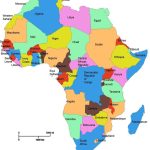While the official statistics focused on what was the former formal economy showed collapse, any quick observation of what is going on shows that these depressing numbers ignore much vibrant economic activity across rural areas.
Although the demographic cycle of largely male migration to formal jobs resulting in remittances flowing to rural areas for investment – in the past mostly cattle – has changed, the remittance economy is still important as the headline statistics show. How does this work? What mechanisms are used for transfers? What investments result? These are the questions tackled in this blog.
Remittances may be for small, regular requirements – groceries, school fees and so on – for emergencies – such as dealing with a pest or animal disease outbreak, paying for medical expenses or coping with drought. But crucially, in the absence of other forms of financing, remittances are also essential for lumpier investments. Today such investments are crucial for encouraging growth in the agricultural economy, and for moving agricultural production towards a more commercial orientation.
As we have observed across our sites, investment in irrigation is vital, as people intensify on smaller plots. Jojo water storage tanks, irrigation pumps, piping and so on are in high demand and can be seen in many farms across the country. Investments in machinery, including grinding mills, peanut butter processing equipment, transport, two-tonne trucks, pick-ups and so on is also crucial in the new agricultural economy, as a previous blog series has shown.
All of these benefit both from the sales of agricultural surpluses and from remittances, in varying combinations depending on crop harvests and the connections of the household to remitting family members.
Remittance flows therefore follow a demographic cycle, with children growing up leaving the farm home and getting jobs at home and abroad. Not all are able or willing to remit but many do, keeping the link across generations between farms and a wider, increasingly global, network.
We have been exploring the patterns of accumulation across our sites, and a clear pattern emerges with investment in education being financed often through agriculture, resulting in few surpluses for investment except in exceptional years, but educated kids will often be able to send money home later once they gain employment in later years, meaning parents can then invest in intensification, often to compensate for lack of family labour and to make farming more manageable in old age.
A particular pattern of contemporary remittances from those who have jobs elsewhere, especially abroad, is investment in ‘projects’. Across our sites we see a whole range of investments, including piggeries, fish farms, goat projects (especially improved breeds), beef cattle feeding/fattening, transport/marketing projects, broiler operations and irrigation plots for intensive horticulture, requiring boreholes, water storage, pumps and pipes.
Continued next page
(132 VIEWS)

